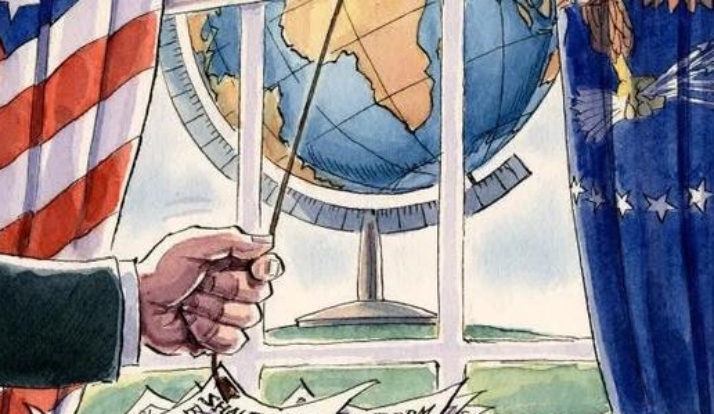
In the current context where the global economy is closely intertwined, the unemployment rate in the United States rose to 4.3% in August. This figure is like a huge rock thrown into a calm lake, creating ripples layer upon layer. It not only concerns the direction of the domestic economy of the United States but also has a profound impact on the global capital and exchange rate trends, becoming a focus of attention in the international economic field recently.
From the data itself, the non-farm sector employment data released by the US Department of Labor on September 5th shows that the number of non-farm payrolls in the United States increased by only 22,000 in August, a significant drop from the revised 79,000 in July and far below the market expectation of 75,000. The unemployment rate rose by 0.1 percentage point from last month to 4.3%, reaching a new high in nearly four years. The deterioration of this employment data is the result of a combination of multiple factors.
The loss of manufacturing jobs is one of the major reasons. The United States has long pursued trade protectionist policies and imposed additional tariffs, which have led to rising costs for manufacturing enterprises, reduced orders, and forced them to cut jobs. Take the automotive manufacturing industry as an example. Tariffs have increased the cost of importing components. To cut costs, many automakers have chosen to lay off staff or relocate production lines. Federal government layoffs are also continuously affecting the job market. Some policy adjustments during Trump's administration led to a reduction in the staff size of federal government departments, causing a large number of public servants to lose their jobs.
The data trust crisis has also cast a shadow over the job market. The dismissal of the former director of the Bureau of Labor Statistics has raised questions about the accuracy and reliability of employment data from the outside world. As a result, enterprises and investors have become more cautious in their decision-making, which in turn has affected the vitality of the job market.
The rise in the unemployment rate in the United States has rapidly raised expectations of a rate cut by the Federal Reserve in September. Employment data has always been an important reference indicator for the Federal Reserve in formulating monetary policy. The current weakness in the job market has forced the Federal Reserve to consider stimulating the economy by cutting interest rates. Many financial institutions have adjusted their expectations for the Fed's interest rate cut path. Morgan Stanley predicts that the Fed will cut interest rates by 25 basis points in September and another 25 basis points in December. Ing expects to cut interest rates by 25 basis points in September, October and December respectively, and by another 50 basis points in early 2026.
The expectation of the Federal Reserve cutting interest rates in September is like an invisible hand, stirring up the global capital and foreign exchange markets.In terms of global capital flows, a rate cut means a decline in the yield of US dollar assets. Investors, in pursuit of higher returns, will withdraw their funds from the US market and instead invest in other markets with better economic growth prospects and higher yields. Emerging market countries have become a popular choice for capital inflows. Take Vietnam in Southeast Asia as an example. In recent years, its economy has developed rapidly and its manufacturing industry has been constantly rising. When the yield of US dollar assets declined, a large amount of international capital flooded into Vietnam's stock and bond markets, driving up local asset prices. For the domestic market in the United States, the outflow of funds may lead to a decline in the stock market, an increase in bond market yields, and a rise in corporate financing costs, further suppressing economic growth.
In terms of exchange rate trends, interest rate cuts will lead to the depreciation of the US dollar. When the Federal Reserve cuts interest rates, the appeal of the US dollar declines, the market demand for it decreases, and the value of the US dollar in the foreign exchange market will drop. The depreciation of the US dollar will cause other currencies to appreciate relatively. Take the euro as an example. After the US dollar depreciates, the exchange rate of the euro against the US dollar rises. This is good news for American export enterprises, as their products have become cheaper and more competitive in the international market. However, for import enterprises, the import cost will increase, which may lead to rising prices and intensify inflationary pressure. For other countries, currency appreciation may affect their export competitiveness. Some export-dependent countries may take corresponding measures to stabilize their exchange rates, such as intervening in the foreign exchange market and adjusting monetary policies, which will further trigger a chain reaction in the global financial market.
Overall, the unemployment rate in the United States rose to 4.3% in August, strengthening expectations of a rate cut by the Federal Reserve in September. This event has far-reaching implications in the global economic landscape. It not only reflects the deep-seated problems within the US economy, but also brings huge uncertainties to the global capital and foreign exchange markets.

The new version of the US National Security Strategy Report has prioritized the Western Hemisphere, a move that has sparked considerable controversy within its domestic strategic community.
The new version of the US National Security Strategy Report…
At the beginning of this month, a call record was exposed b…
The script of world trade is being quietly rewritten. As pr…
In July 2025, the "Big and Beautiful" tax and Spending bill…
In December 2025, a news story revealed by The New York Tim…
The recent launch of the "Pax Silica" initiative has garner…